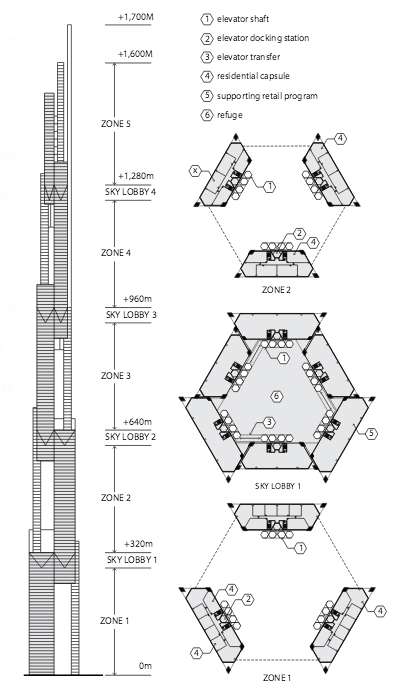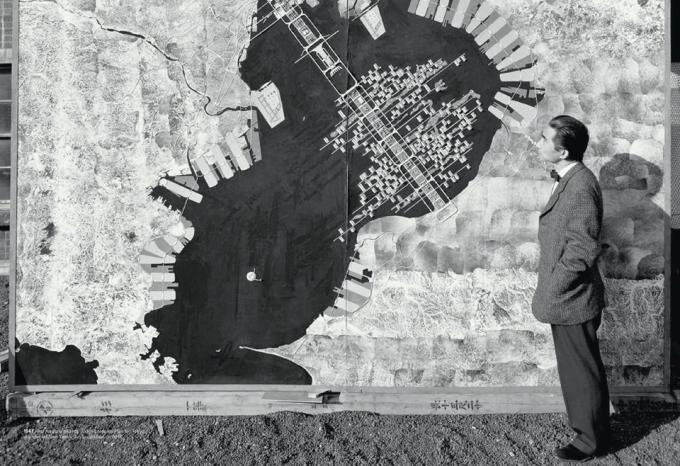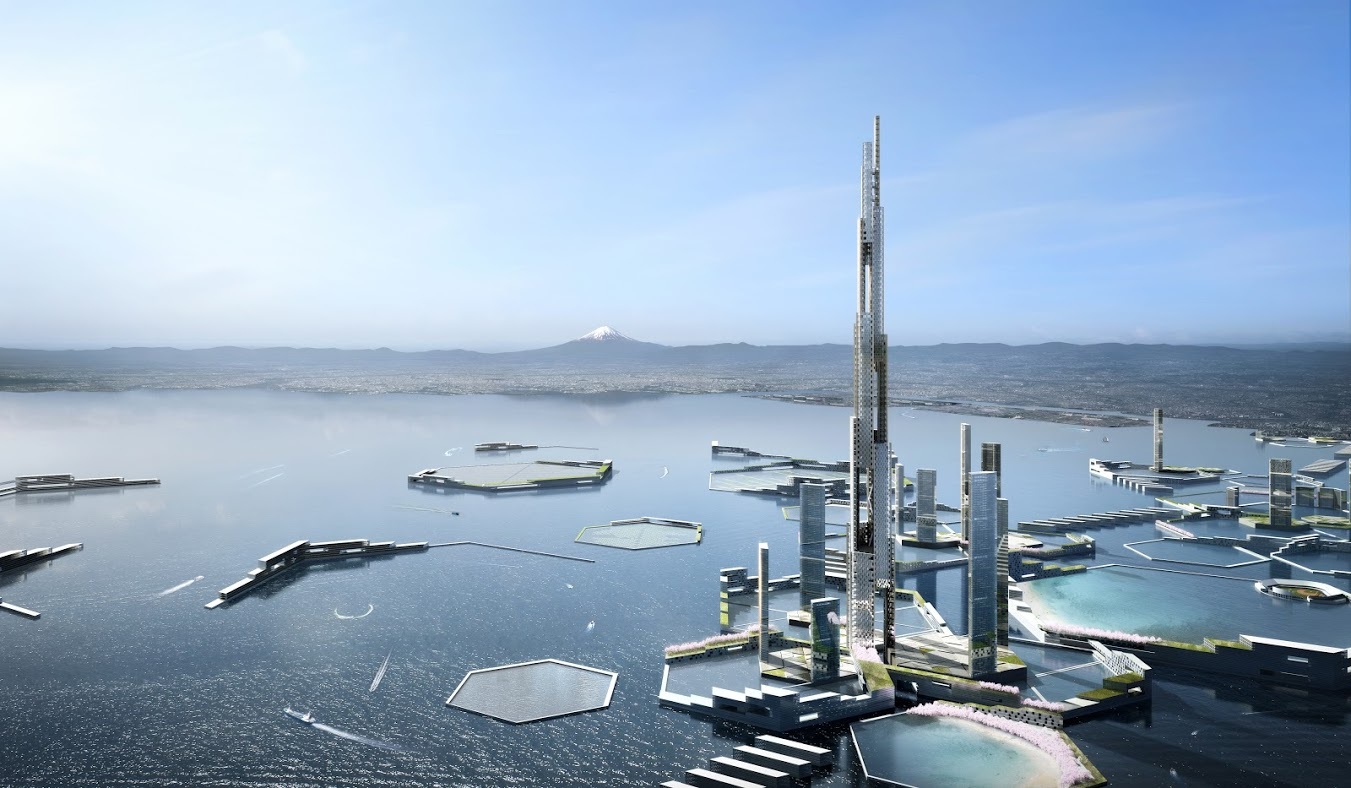
Next Tokyo: a vision for a floating eco-city built in the middle of Tokyo Bay | click images to enlarge
In the 2015 – 2025 Lloyd’s City Risk Index, Tokyo was identified as the 2nd most at risk city only behind Taipei. Hurricanes, earthquakes and flooding were the primary issues raised that put the metropolis at risk. And in alignment with those waterborne risks, global architecture firm KPF has proposed “Next Tokyo,” a vision for Tokyo in the year 2045 when a mile-high tower and eco-city floats on Tokyo Bay providing home for half a million citizens and simultaneously addressing city-wide vulnerability by providing coastal defense infrastructure.
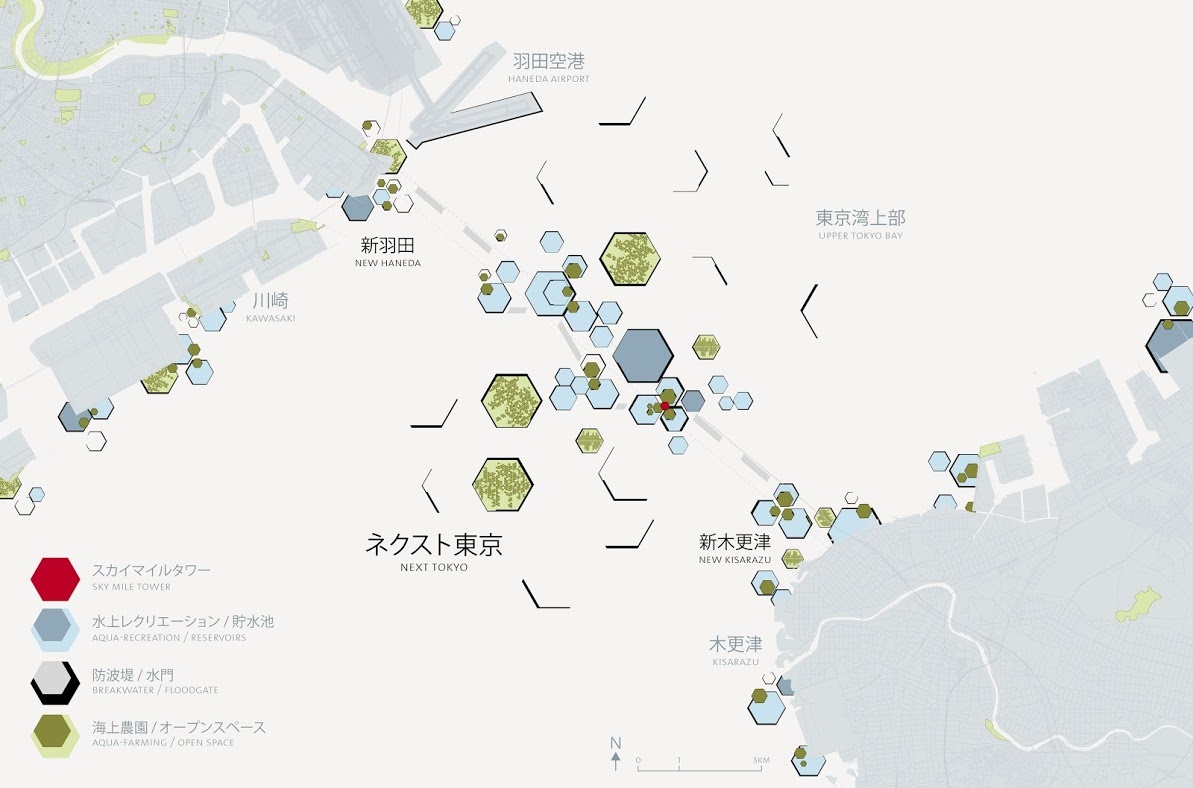
Land use diagram of the proposed Next Tokyo district. Faceted breakwater bars on the ocean-side of the district provide additional defense for the most vulnerable mid-bay portions
Principal architect David Malott is an architect of innovative supertall towers whose portfolio includes 3 of the world’s 10 tallest towers. And his firm, KPF, has been involved in some of Tokyo’s most recent major urban redevelopments like Roppongi Hills and the Grand Hyatt Tokyo, the Merrill Lynch Japan Head Office in Nihonbashi and Otemachi Tower. But Next Tokyo, if realized, will make all his projects look tiny: the plan calls for a 1600-meter tower (1 mile is 1609 meters), which would be twice as high as the world’s current tallest building. There’s always been a gradual increase in height for cities and Malott believes this trend will continue.
Malott addresses two of the major issues with superhigh towers, one being wind (“Even in the most seismically active regions of the world, the design requirements for wind exceed those for earthquakes”) and the other being the distribution of water which, if pumped, could become very costly. Not only is the proposed structure remarkably aerodynamic but energy will be generated on-site through small-scale microturbines integrated at high elevations.
To avoid pumping water throughout the structure a combination of harvesting water directly from clouds and rainwater catchment “can completely eliminate the need for an additional source of potable water.”
Next Tokyo also plans to leverage next-generation technology currently being developed like Elon Musk’s “Hyperloop” for transporting people into Tokyo, as well as a MULTI magnetic-levitation elevator currently being developed by ThyssenKrupp.
Sound like science fiction? Or a make-believe story conjured up by those who dream of the future? Sort of. But the plan actually picks up were one legendary Japanese architect left off 55 years ago. In 1961 Kenzo Tange presented his plan for Tokyo Bay (1960) on an NHK TV program. The radical design called for a linear city that stretched 80 km across Tokyo Bay. Following not only in those footsteps but in that same format, Malott presented his plan during a TV program on NHK that aired in 2015.
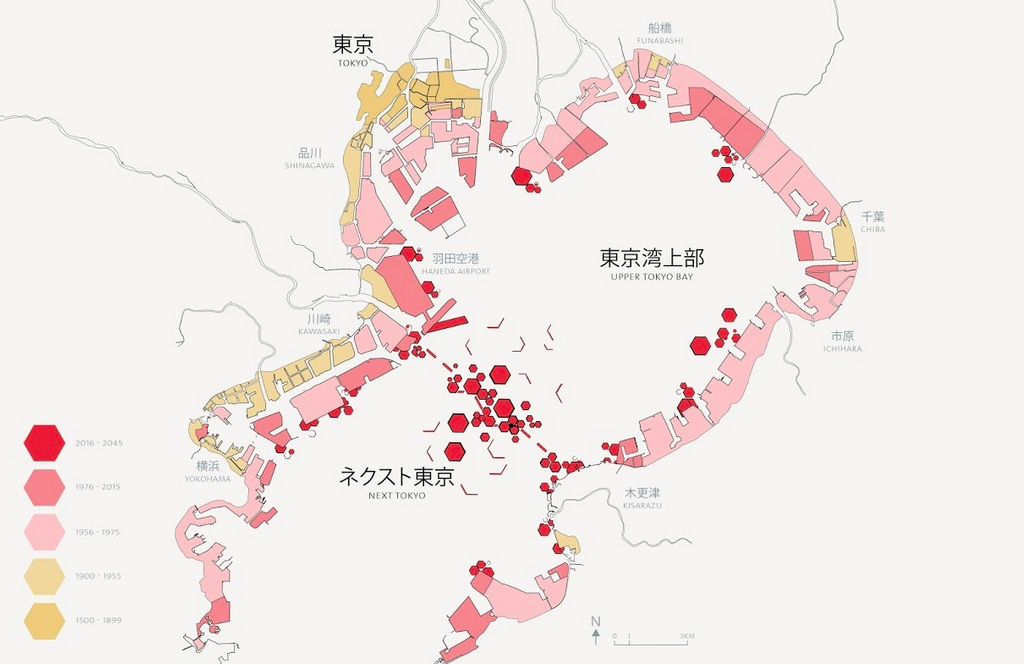
The coastline of Tokyo Bay has experienced radical modification since the 16th century. The map shows reclamation over time in Tokyo Bay, including proposed Next Tokyo in 2045
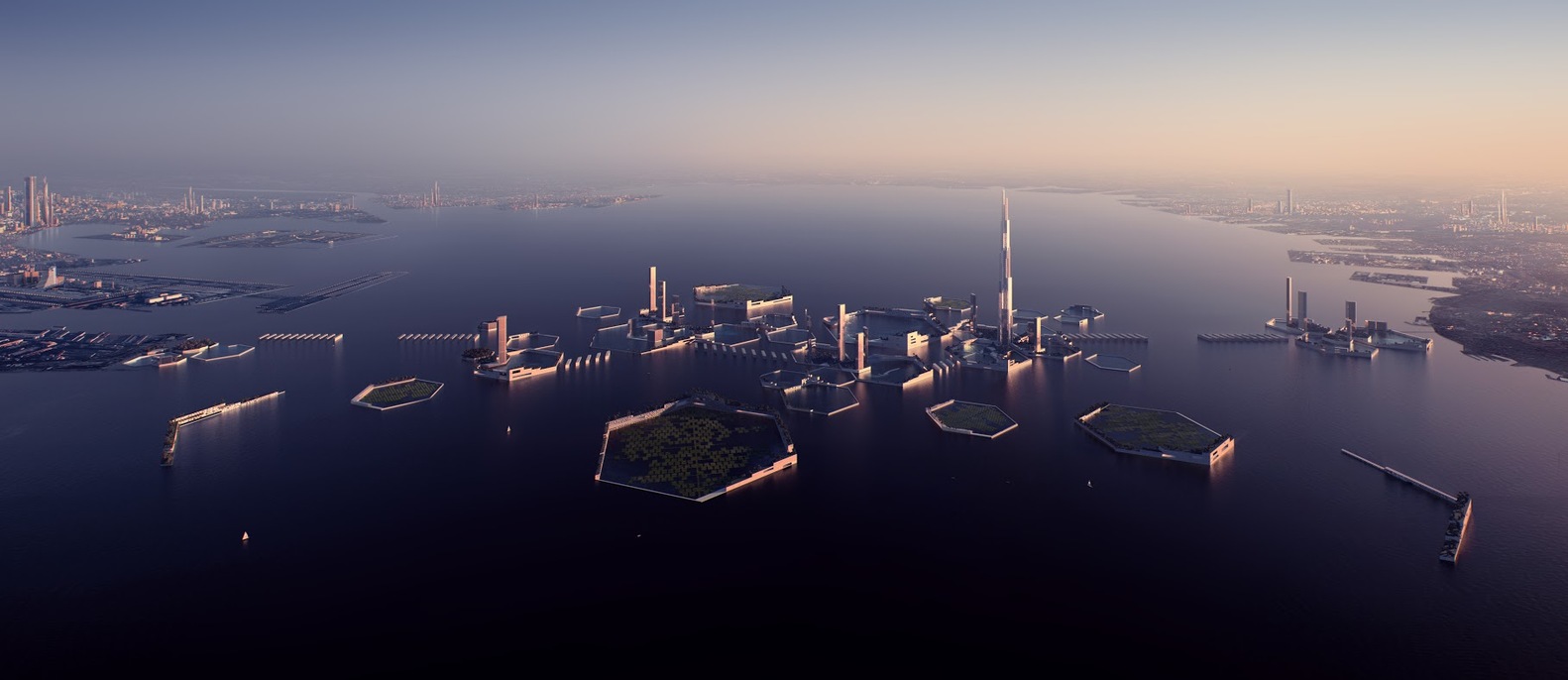
Urban farming exists at multiple scales in the district, and the largest infrastructural rings collect saline bay water to grow algae, which can provide a clean fuel source
“The global population will likely continue to concentrate in urban areas,” says Malott, “most of which are situated near major bodies of water.” Next Tokyo not only builds on Kenzo Tange’s legacy but it presents a coastal megacity that responds to increasing environmental threats and sprawling urban migration trends. You can read more about the proposal in this white paper, which was published in a journal published by the Council on Tall Buildings and Urban Habitat.
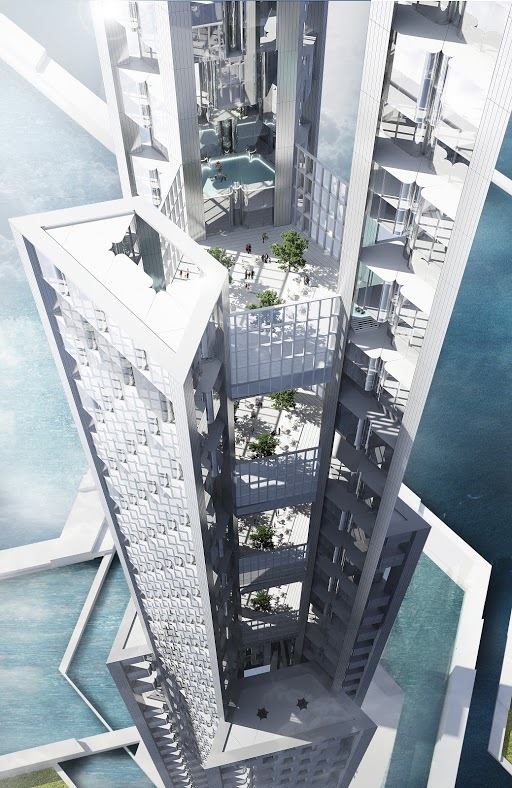
Elevated open-air spaces were determined to be viable for the safe enjoyment of the residents through the use of wind tunnel testing, which helped to identify protected pockets with lower wind speeds

